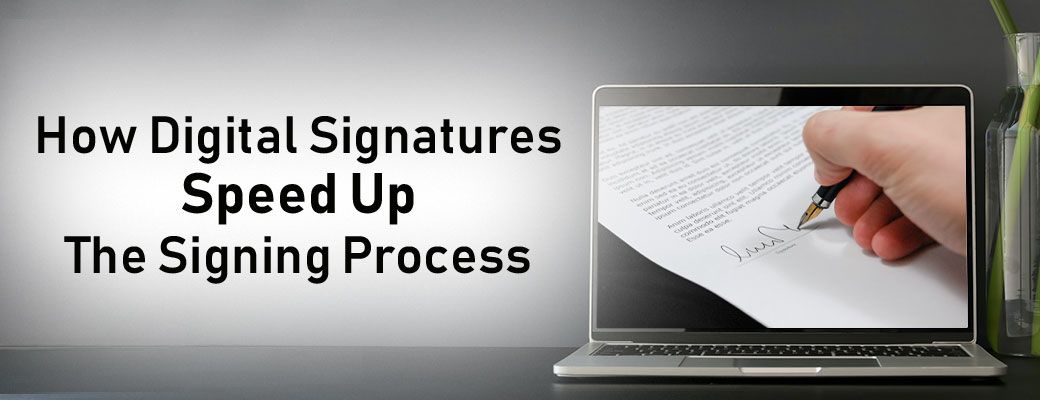How Digital Signatures Speed Up The Signing Process

In today’s hyper-connected world, traditional methods of signing and authenticating documents are increasingly being replaced by electronic signatures, sometimes referred to as digital signatures. Digital signatures work by proving that a digital message or document has not been altered since it was signed. Electronic and digital signatures are so advanced that they can be authenticated in seconds, not hours or even days, and that is not all.
The security features embedded in digital signatures ensure that the document has not been modified and that the signature is legitimate. If you regularly sign digital documents, the easiest way to do this is to scan digital signatures. You can create a scanned digital signature once and then use it again to sign contracts and other documents. The digital signature software can track the documents you sign, provide a track of the signature process, and use a third-party certificate to validate and authenticate the document. Once you have digitally signed a document and it is ready for distribution, you have a digital signature of that document in your possession.
If you want to create a digital signature process yourself, you should look at the best options for the electronic signature software. With a digital signature software like ArcSign, you can integrate digital signatures and electronic signatures into highly customized workflows, with the difference that the process is performed in a single, easy-to-use interface instead of a series of separate processes. You can learn more about ArcSign by going here.
However, it is also important for organizations to understand what goes on behind the scenes when they introduce digital signatures, including application and process verification. eSignatures and digital signatures can be a means to streamline the process, but procurement teams need to be aware of this when it comes to endpoint recognition and response technology. There are a number of things to know about digital signature applications and how they work and operate. In cryptography, a server-based signature is a signature, and in the case of electronic signatures, there is no “digital signature application,” only a description of how it works and who executes it.
Electronic signatures allow a person to hand-sign a document with their signature and sign it with one click. Digital signatures are used to sign documents such as contracts, documents, contracts and other forms of government documents. Some people also like to add their digital signatures to their email signatures to get a more personal touch. To get a more in-depth analysis between the key differences of electronic and digital signatures, check out our other blog here.
The technology behind the digital signature allows the person receiving the signed document to verify its true origin and integrity. While the authentication of a digital signature provides a guarantee that the document has been signed by the specified body and has not been altered, not all electronic signatures offer the same guarantee. Although a certified digital signatory gives an assurance that a document has been signed by a state and that it has not been altered or modified. However, while authentication of a certified digital signature provides a guarantee that a document has been signed by a company that has not yet been specified or that it has not been modified (e.g. a copy of the original document), not everyone with an electronic signature can offer the same guarantees.
Using a digital signature simplifies the signing process, allowing sales teams to increase productivity, complete more transactions and grow their customer base. The benefits of digital signatures have the potential to attract more offices and companies to eSignatures, as the workplace is much more efficient and secure. However, there are a number of features that distinguish digital signatures from other types of electronic signatures. Online, users can speed up signature and documentation processes by using a variety of online tools such as Google Docs, Microsoft Word, Excel, PowerPoint and more.
Signing papers may give recipients a palpable sense of security, but signing documents with a digital signature must be time-consuming. This hampers the key public infrastructure that digital signatures bring to the table. Digital signatures save the need to sign individual pages, scan the signed document and send it back by email. They help companies save time and money by signing a document or contract at the touch of a button.
